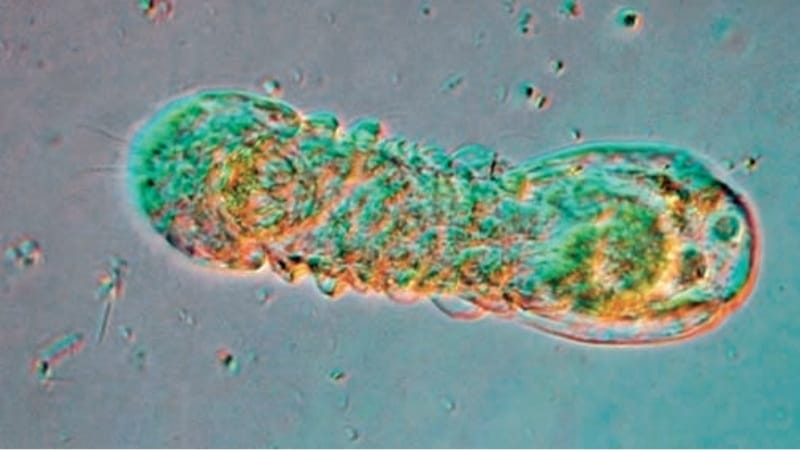The first and only micrognathozoan , Micrognathozoa specimen, was collected from Greenland in 1994 but not formally described until 2000. Micrognathozoans are tiny animals that are interstitial (living between sand grains) and about 142 µ m long. The body consists of a two-part head, a thorax, and an abdomen with a short tail . The cellular epidermis has dorsal plates but lacks plates ventrally. These animals move using cilia and also possess a unique ventral ciliary adhesive pad that produces glue.

There are three pairs of complex jaws. The mouth leads into a relatively simple gut. An anus opens to the outside only periodically. There are two pairs of protonephridia. The reproductive system is not well understood. Only female reproductive organs have been found, so perhaps the animals reproduce parthenogenetically. Cleavage and subsequent development have not been studied.
Useful External Links
- Phylum Micrognathozoa by Gordon Ramel
- Nervous system and ciliary structures of Micrognathozoa (Gnathifera): evolutionary insight from an early branch in Spiralia by Katrine Worsaae
- An Introduction to Loricifera, Cycliophora, and nathozoa by Reinhardt Møbjerg Kristensen


